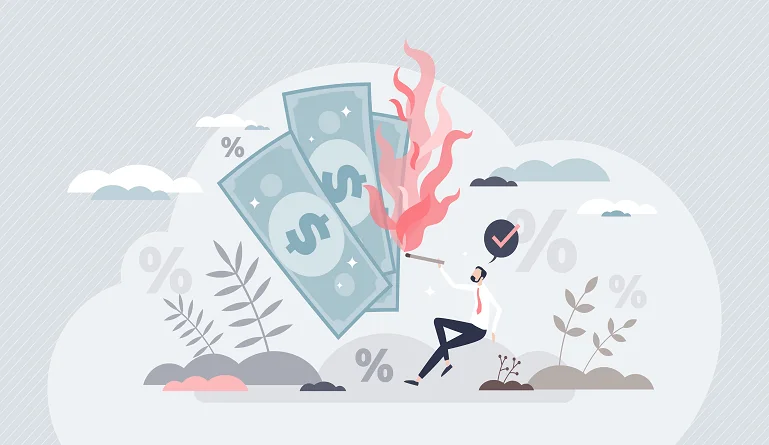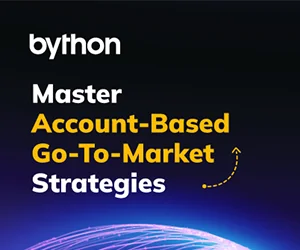Understanding burn rate and runway is essential for the survival and expansion of tech startups. These financial metrics provide vital insights into a company’s spending habits and sustainability.
The burn rate startup shows how fast a company depletes cash reserves, while the runway indicates how long a startup can operate before funds run out. Tracking these metrics enables founders and investors to make smart decisions about resources, fundraising, and strategy.
Understanding burn rate and runway helps startups:
- Navigate financial challenges
- Optimize spending
- Plan for long-term success
Effectively managing these metrics can mean the difference between a startup’s growth and its premature closure.
Here are the key concepts every tech startup founder needs to know about burn rate and runway.
- Definition of Burn Rate
- How to Calculate Burn Rate
- Definition of Runway
- Factors Affecting Burn Rate and Runway
- Strategies for Managing and Reducing Burn Rate
- Assessing the Acceptability of a Higher Startup Burn Rate
- Using Burn Rate as a Trust-Building Exercise
- Consequences of an Excessively High Burn Rate
- Visualizing Your Cash Runway and Burn Rate
What is Burn Rate?
Burn rate is the speed at which a startup spends its cash reserves over a specific period, typically measured monthly. It comes in two forms. The gross burn rate is the monthly cash spent, while the net burn rate is the difference between cash spent and cash received.
Tracking burn rate alerts startups to potential financial issues early. It helps founders adjust strategies, allocate resources wisely, and time fundraising efforts. This proactive approach supports agile decision-making and sustainable growth in a competitive market.
Burn rate is affected by various expense categories, primarily divided into:
- Fixed expenses: Expenditures that don’t change with business volume, like workspace leases or staff paychecks.
- Variable expenses: Costs that rise or fall depending on operational activity, such as production materials or advertising budgets.
Understanding these categories helps startups manage their burn rate more effectively and allocate resources strategically.
Types of Burn Rate
The two main types of burn rates are crucial for startups to assess their financial health accurately.
-
Gross Burn Rate
The gross burn rate captures a company’s total financial expenditures over a set timeframe, usually monthly. It encompasses all costs, irrespective of income generated. The cash outflow velocity comprehensively explains a startup’s overall spending pattern.
-
Net Burn Rate
This is the difference between the cash spent and the revenue generated in a specific period. It shows how quickly a company is losing money after accounting for income. Net burn rate offers a more nuanced view of a startup’s financial situation, considering expenses and revenue.
Techniques and Tools for Effective Big Data Forecasting
Figuring out the burn rate is a simple yet crucial step in understanding a startup’s financial status. Let’s break down how to determine both gross and net burn rates:
-
Gross Burn Rate Formula:
- Gross Burn Rate = Total Monthly Expenses
For instance, if a new company pays out $25,000 in salaries, $5,000 for workspace, and $10,000 on miscellaneous expenses each month, we’d add:
$25,000 + $5,000 + $10,000 = $40,000 (monthly gross burn rate)
-
Net Burn Rate Formula:
- Net Burn Rate = Gross Burn Rate – Monthly Revenue
Using our example, if this startup earns $25,000 monthly, we’d calculate:
$40,000 – $25,000 = $15,000 (monthly net burn rate)This means the company spends $40,000 monthly (gross burn) but only loses $15,000 monthly (net burn) after accounting for revenue.
-
Calculation Tools
Several tools can help startups calculate and track their burn rate:
- Financial management software like QuickBooks or Xero
- Spreadsheet applications such as Microsoft Excel or Google Sheets
- Specialized startup financial modeling tools like Runway or Pry
These tools can visually represent burn rate trends over time, helping founders make data-driven decisions.
What is Runway?
Runway is a critical metric for startups that represents how long a company can function before running out of money. Here’s how to calculate the runway:
-
Runway Formula:
- Runway (in months) = Cash Reserves / Monthly Burn Rate
Let’s look at two examples:
- A company has $500,000 saved up. It spends $50,000 each month. Here’s how long it can last: Runway = $500,000 / $50,000 = 10 months
- A tech startup has $600,000 in its account. Its monthly costs are $75,000. The runway works out to: Runway = $600,000 / $75,000 = 8 months
Understanding the runway is crucial for startups to plan their financial future and make informed growth, hiring, and fundraising decisions.
For instance, a startup with a 6-month runway might need to start fundraising immediately, while an 18-month runway has more time to focus on product development and market traction.
It’s important to note that the runway can change quickly based on various factors, so regular monitoring and adjusting strategies accordingly is essential for startup survival and success.
Understanding Factors Affecting Burn Rate and Runway
Several factors influence a startup’s burn rate vs runway.
-
Operating Cash Flows
These are the cash inflows and outflows from day-to-day business activities. Positive operating cash flow can extend the runway, while negative flow accelerates the burn rate. For example, increasing sales or improving collections can boost cash inflow, while rising operational costs can increase outflow.
-
Investing Cash Flows
These involve cash used for long-term investments or generated from selling assets. Purchasing equipment or investing in R&D can increase the burn rate while selling non-core assets can provide additional cash.
-
Financing Cash Flows
This includes cash from investors or loans and payments for dividends or debt. A new funding round can significantly extend the runway, while debt repayments can shorten it.
-
Fixed vs. Variable Expenses
Stable expenses like office space and employee wages don’t change with business fluctuations. In contrast, flexible costs like materials and sales bonuses rise and fall based on output and revenue. Understanding this mix helps in managing the burn rate effectively.
Managing and Reducing Burn Rate
Effective burn rate management is crucial for startup longevity.
-
Tracking Costs by Category
Detailed cost tracking helps identify areas for potential savings. Use financial software to categorize expenses and analyze spending patterns regularly.
-
Prioritizing Growth Objectives
Align spending with key growth drivers. Focus resources on activities that directly contribute to revenue growth or market expansion.
-
Lowering Fixed Expenses
Review and optimize fixed costs. Consider remote work options to reduce office expenses, negotiate with vendors for better rates, or explore more cost-effective alternatives for necessary services.
-
Focusing on ROI and Growth
Prioritize investments with a clear return on investment. Evaluate each expense against its potential to drive growth. For instance, invest in marketing channels with proven customer acquisition costs rather than untested strategies.
Is a Higher Startup Burn Rate Acceptable?
The acceptability of a high burn rate depends on various factors.
-
Contextual Acceptance
A higher burn rate may be justified in specific scenarios, such as during rapid scaling or entering new markets. For instance, a add value tech startup might increase spending to capture market share quickly.
-
Fundraising Timing
The timing of fundraising efforts is crucial when managing a high burn rate. Start fundraising well before running out of cash, as the process often takes longer than expected. Aim to secure funding when you still have at least 6-9 months of runway.
-
Long-term Consequences
Maintaining a high burn rate can dilute ownership through frequent fundraising rounds. It may also create pressure to achieve unrealistic growth targets, potentially leading to unsustainable business practices—balance short-term growth with long-term financial health.
Leveraging Burn Rate as a Trust-Building Tool
Effectively communicating the burn rate can be a powerful tool for building trust and confidence among key stakeholders.
-
Investor Relations
Transparent updates on fund utilization demonstrate financial responsibility and openness, strengthening investor relationships and easing future fundraising.
Investors better understand the company’s financial health and growth trajectory, often leading to valuable input. Clear burn rate communication positions the startup as a trustworthy investment.
-
Team Confidence
Understanding the burn rate boosts employee confidence and morale. Employees who see responsible financial management feel more secure and invested in the company’s success. This transparency fosters a culture of financial awareness, encouraging critical thinking about expenses and efficiency ideas.
Regular updates motivate the team to work towards extending the company’s financial runway, creating unity and purpose. This shared understanding aligns individual efforts with the startup’s broader economic goals.
What Happens When Burn Rate Becomes Too High?
A high burn rate can significantly challenge a startup’s survival and growth prospects. Understanding these risks and implementing mitigation strategies is crucial for effective management.
-
Risks
A high burn rate exposes a startup to these critical risks:
- Running out of cash before achieving key milestones.
- Forced layoffs or project cancellations.
- Increased pressure to raise funds on unfavorable terms.
- Potential loss of control due to dilution from emergency fundraising.
- Reduced ability to capitalize on market opportunities.
- Damage to company reputation and investor confidence.
- Inability to attract or retain top talent due to financial instability.
-
Strategies
To mitigate the risks associated with a high burn rate, startups can implement various strategies:
- Enforce strict cost control measures across all departments.
- Prioritize revenue-generating activities and high-ROI projects.
- Renegotiate contracts with vendors and suppliers.
- Consider transitioning to a remote work model to reduce office expenses.
- Explore alternative revenue streams or pivot business models if necessary.
- Develop a clear, staged plan for lowering the burn rate over time.
- Focus on improving operational efficiency and productivity.
- Consider strategic partnerships to share costs or access new markets.
How to Visualize Your Cash Runway and Burn Rate
Effective visualization of burn rate and runway is essential for maintaining financial health and making informed decisions.
-
Tools and Techniques
Various tools and techniques can aid in visualizing burn rate and runway. These include:
- Financial software platforms (e.g., QuickBooks, Xero, FreshBooks, Wave)
- SaaS-based financial analytics tools (e.g., ChartMogul, Baremetrics, ProfitWell, Stripe Analytics)
- Spreadsheet solutions (e.g., Microsoft Excel, Google Sheets, Airtable)
- Interactive dashboard tools (e.g., Tableau, Power BI, Domo, Looker)
- Visualization techniques (e.g., burn rate graphs, runway projection charts, cash flow waterfall diagrams)
- Specialized startup financial tools (e.g., Runway.com, Fintop’s Burn Rate Calculator, Pry)
- Cash flow projection and forecasting tools (e.g., Float, Pulse, Anaplan)
Regular tracking and analysis are crucial for visualization. Establish a routine of weekly or monthly financial reviews, focusing on burn rate trends and projected runway. This consistent monitoring allows for early detection of issues and timely adjustments to strategy.
Creating a Financial Model for Your Startup
Form a comprehensive financial model to project burn rate and runway. List income sources and expenses, categorizing them as fixed or variable. Include realistic revenue projections based on market research.
Develop monthly forecasts for 12-18 months, considering various growth scenarios. Use spreadsheet functions to automate calculations and update regularly with actual figures to guide decision-making.
Building a Sustainable Spend Culture
Foster financial responsibility to extend startup longevity. Set clear goals and communicate them transparently. Implement an efficient expense approval system balancing oversight with agility.
Provide financial literacy training to help team members understand their impact. Celebrate cost-saving initiatives and delegate budget ownership to team leads, making financial prudence a core company value.
Final Thoughts
Burn rate and runway are critical metrics for tech startups, offering insights into their financial health and sustainability. Understanding these concepts helps founders navigate challenges, optimize growth, and build trust with investors and team members.
Prioritize financial discipline by regularly tracking these metrics, implementing tools, and involving your team in budget management. Your startup’s success depends on mastering these metrics—start monitoring them today.
Frequently Asked Questions about Burn rate and Runway
Q. Are there any industries where high burn rates are more common?
A. High burn rates are common in biotech and software startups. These industries often need large investments before making money.
Q. What’s the relationship between burn rate and growth rate?
A. In startups, the burn rate and growth rate often have an inverse relationship. Higher burn rates can fuel faster growth but may shorten the company’s runway.
Q. How does hiring new employees affect the burn rate?
A. Hiring new employees usually increases the burn rate due to salaries and benefits. However, new hires might help increase revenue over time.







